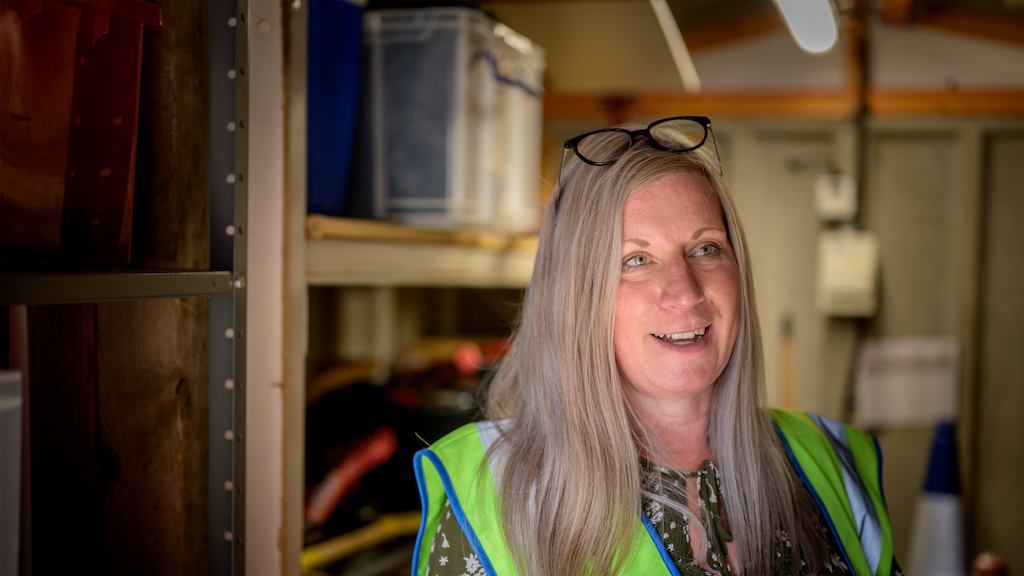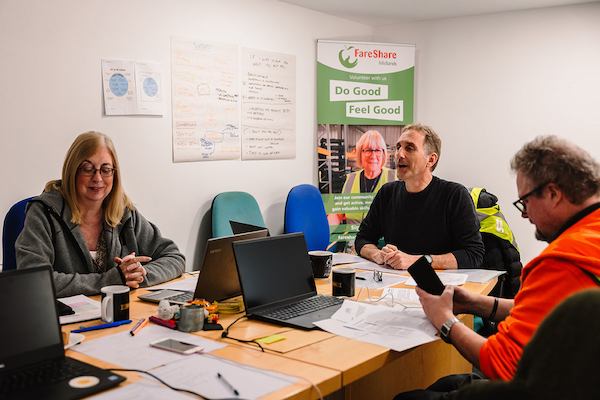Latest Labour Market stats show government needs to show greater ambitions for older workers

The Centre for Ageing Better is part of a group of organisations is calling on the government to be more proactive in getting more older people into work if it wants to meet its manifesto pledges around economic growth.
Official Labour Market stats released this morning show that there are now almost one million more older workers in economic inactivity since the pandemic.
The government needs to show greater ambition for the working lives of older people if it is to meet its manifesto pledge of an 80% employment rate for the country, a collective of expert organisations is warning.
The 50+ Employment Taskforce is calling on the government to target raising the employment rate of 50-59-year-olds to 80% and the employment rate for 60-66-year-olds to 55% within the next ten years.
The Taskforce says the target is well within reach with the right policies to improve the quality of back-to-work support and to get employers on board.
When the state pension age begins to rise to 67 in 12 months’ time, there are expected to be 900,000 people aged 50-66 who will be either unemployed or economically inactive but interested in working.
Getting just half of these back into work would deliver the necessary increase in 50+ employment rates. This would ensure the government can meet its overall 80% employment rate ambition.
Today’s ONS Labour Market stats show that urgent government intervention is needed if this is to happen, according to the taskforce, whose members include the Centre for Ageing Better, the Learning and Work Institute, the Institute for Employment Studies and the Health Foundation.
The latest figures show that employment rates for 50-64-year-olds are 71.6% compared to 85.7% for 35-49-year-olds.
The employment age gap for 50+ workers has grown to 14.1 percentage points compared to before the pandemic when the difference between 50-64 and 35-49 age groups was just 13.1 percentage points.
There are now almost one million (992,000) more older workers in economic inactivity than prior to the Covid-19 pandemic five years ago.
Our analysis reveals:
- Employment rates fall below the 80% employment rate target at 53 and plummet to just 50% at 64 – three years before the new state pension age kicks in.
- Currently 1.1 million working-age people in their sixties are living in poverty – almost a quarter (23%) of this age group.
- The UK has similar employment rates among its 25-54 age group as other countries that already have an overall 80% employment rate such as Iceland, Switzerland, and the Netherlands. But it lags woefully behind in employment rates for 55-64-year-olds (16 percentage points lower than Iceland).
Dr Emily Andrews, Deputy Director for Work at the Centre for Ageing Better, said:
The government showing greater ambition to have more older workers in the economy is vital for people in their 50s, 60s and beyond who are facing significant financial challenges.
“Another rise in the state pension age looms on the horizon but our ageist labour market means that many people in their mid-60s are struggling to find work and struggling to make ends meet. The 60-64 age group has the highest poverty rates for any adult age group over 25. The last time the state pension age increased, poverty rates doubled for those on the cusp of eligibility.
“But the impact of raising employment rates for the 50+ goes well beyond what would benefit that age group. The government desperately needs to achieve this if it is to meet the economic growth plans it set out to voters last summer. The two key age groups for workers that will fill the labour and skills shortages of employers are those aged under 25 and those aged above 55. The government has shown it is committed to tackling youth unemployment, now it needs to do the same for workers entering the final third of their working lives.”
Christopher Rocks, lead economist and head of secretariat, the Health Foundation, said:
We know that when people in their 50s and 60s leave the workforce, it can harm both their financial security and long-term health.
“Good work – that is flexible, secure, and well designed – helps people stay in work for longer and age well. If the government wants to increase employment among older workers and raise the State Pension age sustainably, it needs to take action to help people remain in work when health issues arise, and work with employers to improve access to good-quality jobs that reflect the realities of longer working lives.”
Alice Martin, Head of Research, Work Foundation at Lancaster University, said:
As the pension age rises and worker shortages in key sectors bite, supporting older workers to stay in employment is essential to sustaining our economy.
“Without action, millions risk being pushed out just when we need them most. We need jobs that support good living across our lifetimes – including adequate paid time off for health and caring responsibilities.”
Patrick Thompson, Head of Research Analysis and Policy, Phoenix Insights, said:
We welcome the government's long-term ambition to raise the UK's employment rate to 80%, but this will be impossible to achieve without action to make longer working lives a genuine reality
“To drive focus and prioritisation, the government should adopt specific targets for the employment rates of people in their 50s and 60s. This would not only help to achieve the government's economic growth mission but also raise people's living standards both now and in the future.
“Phoenix Insights research shows that the majority of people with a defined contribution pension will enter retirement with either less than they expect, or less than they need in terms of a minimum living standard. Supporting people to continue working and saving for longer is critical for improving future retirement prospects as well as their wellbeing and financial security today.”
Stephen Evans, Chief Executive of the Learning and Work Institute, said:
Everyone who can work should have the opportunity to do so. That includes older people, particularly as an aging population combines with longer working lives.
“Achieving that will require additional and better support to find work, more joined up work, health and skills services, and employers to think about job design and how they recruit. Achieving more will be good for people, the economy, and taxpayers.”
Caroline Abrahams, Charity Director at Age UK, said:
At Age UK we are pleased to be part of the 50+ Employment Taskforce. With all the years of experience, knowledge, and wisdom that older workers have it’s imperative that everyone who wants to work is able to do so and that employers recognise how much value this age group can add to their business.
“ However older workers face many barriers, particularly if they are carers, have a health condition, or have recently found themselves unemployed and need to update their skills . And this is not to mention the ageism that pervades the labour market and prevents many in this age group from fulfilling their potential. It’s crucial that the next Government looks urgently at how to facilitate more – and better – working in later life, in terms of both enabling people to stay with their existing employer, and to find alternative work if the need arises.
“The Government made a pledge in their manifesto for an 80% employment rate, and this must apply equally to older workers. There needs to be a focused effort with right policies and support in place that looks explicitly at the barriers faced by older workers, otherwise we risk failing to take full advantage of this enormous talent pool, which would be not only be short-sighted but also a real tragedy at an individual and a national level.”
The 50+ Employment Taskforce has outlined a number of ways that national and regional governments, as well as employers, can take action to better utilise the potential of the 50+ population to spur economic growth.
They include:
- The new national jobs and careers service and locally commissioned employment initiatives to be designed with a focus on the needs of people in their 50s and 60s included.
- Delivery of employment support programmes to be improved to ensure people in their 50s and 60s achieve similar outcomes to people in their 40s.
- Government to undertake specific evaluation research to uncover and improve the effectiveness of their programmes for these older age groups.
- More employers actively implementing policies to recruit, retain, and develop workers in their 50s and 60s, championing their value to their organisations and the UK economy.
The 50+ Employment Taskforce is a collective of organisations who champion the employment agenda for people in the 50s and 60s to national and local government and to the media.
The members of the Taskforce include: the Centre for Ageing Better, the Institute for Employment Studies, the Learning and Work Institute, the Health Foundation, the Work Foundation, UNISON, Phoenix Insights and Age UK.












